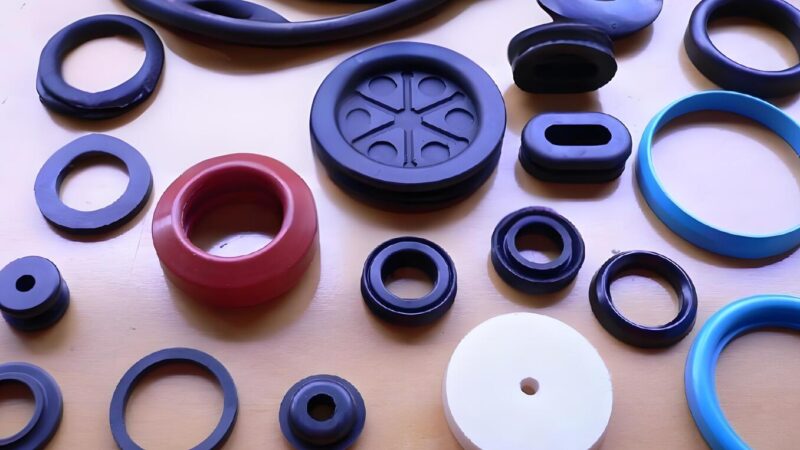The Essential Guide to Mechanical Keyboards

Mechanical keyboards, with their satisfying clicks and tactile feedback, have been gaining popularity over the last decade. With more options than ever for customization and quality manufacturing, mechanical keyboards appeal to gamers, programmers, writers and anyone who spends a substantial amount of time typing.
But what exactly is a mechanical keyboard, and what makes them different from traditional membrane keyboards? This guide will cover everything you need to know as a beginner – from key switches to ergonomics to customization options like keycap sets.
What is a Mechanical Keyboard?
A mechanical keyboard operates using physical switches under each key that register key presses. This makes them more durable, responsive, and customizable than membrane keyboards. The switches have a spring-loaded design that creates a tactile bump or click feedback with each keypress.
In contrast, membrane keyboards use pressure pads under keys to register presses. This leads to a “mushy” feel and lack of precision. The membranes also wear out over shorter periods compared to mechanical switches rated for 50+ million key presses.
Key Switch Types
The type of key switches used is what gives mechanical keyboards their unique feel and sound. Common switch types include:
- Linear switches: Smooth, consistent keypress without bump or click. Great for fast, fluid typing. Examples are Red, Black, Yellow.
- Tactile switches: Non-clicky with a noticeable bump during actuation for feedback. Popular options include Brown, Clear, Copper.
- Clicky switches: Tactile bump with an audible click sound. Satisfying for typing but noisy. Blue and Green switches are common clicky options.
You can choose switches based on the use case (gaming, typing, coding), whether you prefer quiet or loud keys, and the amount of pressure required to activate a key. Testing different switch types yourself is recommended.
DIY Customization and Keycap Sets
One major advantage of mechanical keyboards is options for customization. Replacing the keycap set is an easy and popular way to change the look and feel.
Keycap sets consist of caps for all alphabet, number, modifier etc. keys crafted from thick ABS or PVC plastic. They cover the switches on a keyboard. Choosing between profiles like OEM, Cherry, and SA affects the shape and height of the caps.
Many manufacturers offer custom keycap sets with colorful themes, material options like PBT plastic for durability, and designs like side-lit legending for RGB keyboards. Matching a set to the layout you want makes finding replacements easy.
Swapping out stock keycaps for a keycap set allows you to personalize a keyboard to suit aesthetic preferences without affecting performance. Combine with customizable cases, cables, switches, plates and more for a fully unique typing experience.
Ergonomics and Layouts
Standard rectangular keyboards with number pads are most common, but not always the most comfortable or efficient. Consider options like 60%, tenkeyless, and split ergonomic keyboards for alternatives.
Smaller layouts allow positioning keyboards and mice for ergonomic setups that reduce strain. Tenkeyless keyboards lack a number pad while 60% keyboards are ultra compact. Both free up space while retaining essential keys. Split designs with each half separate also promote more natural hand, arm and shoulder alignment.
If you require a number pad or function keys, opting for a detachable number pad accessory can provide both comfort and functionality. Some keyboards also allow switching between Mac and Windows layouts for added flexibility.
Why Choose a Mechanical Keyboard?
From their reputation for high performance and extreme durability, mechanical keyboards offer significant benefits over typical membrane keyboards:
- A better typing experience – Tactile, clicky switches with each keypress are satisfying to use and can aid accuracy.
- Customization – Keycap sets, switches, cables and more can be swapped to match preferences.
- Ergonomics – Compact layouts with split designs prevent strain for long typing sessions.
- Superior responsiveness for gaming – Faster actuation from quality mechanical switches enhances gameplay.
- Long-term reliability – Rated for at least 50 million key presses on average.
- Macros and media controls – High-end models include programmable keys for shortcuts, macros and media functions.
While more expensive at first, mechanical keyboards provide an unrivaled typing experience, extreme long-term value, and excellent performance all while letting you show off personal style. The wide array of customization options makes finding one suited to specific needs and tastes simple.
For those who spend many hours per day typing or gaming, mechanical keyboards can be a worthwhile upgrade both for comfort and productivity. Their reputation for premium responsiveness and longevity means that with some research it’s easy to find a perfect match.


